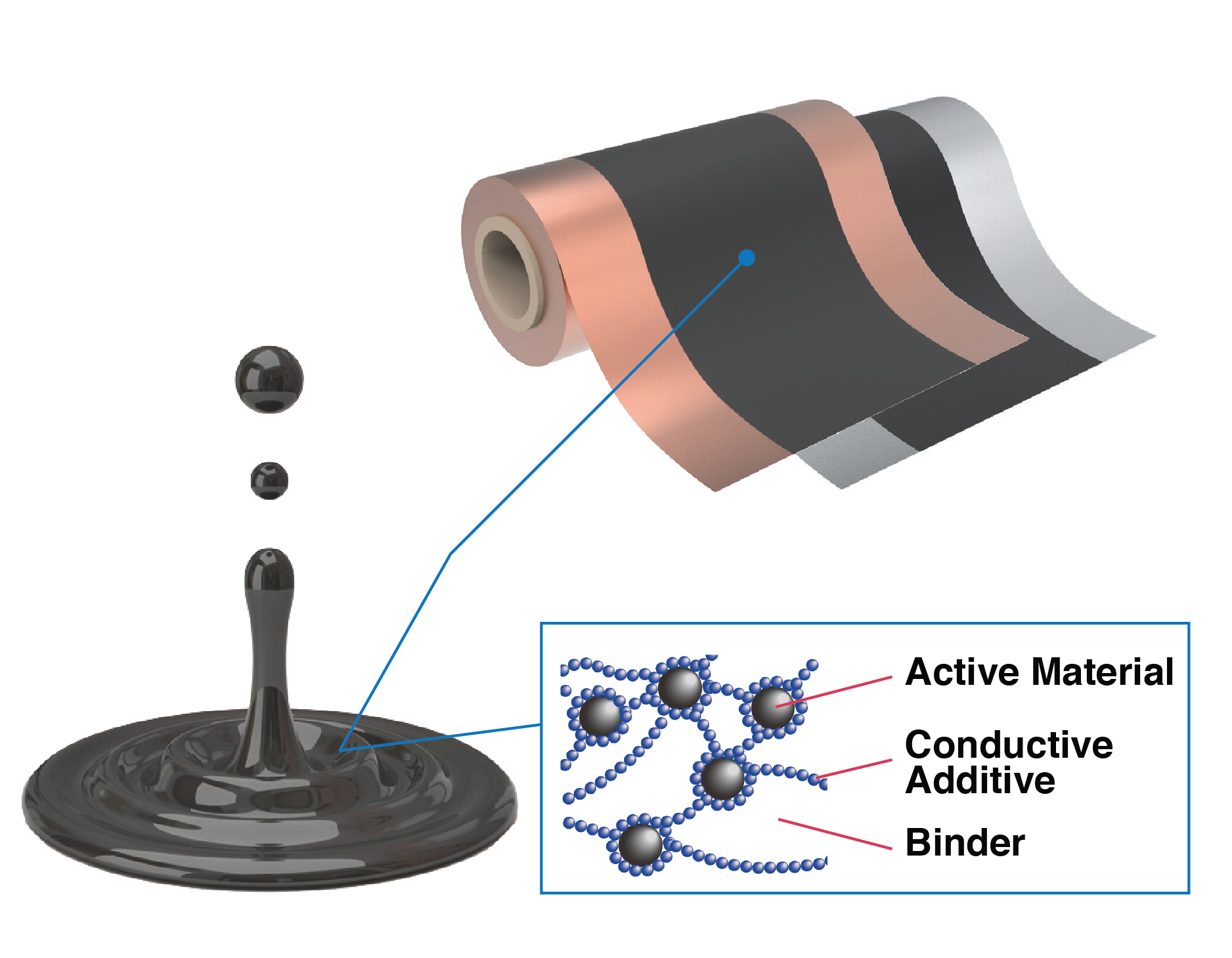What is the Electrode Slurry of a Lithium-ion Battery ?
What is electrode slurry ?
The electrode slurry consists of the following electrode materials dispersed in an organic solvent. The electrode sheet of the lithium-ion battery is made by applying electrode slurry to the metal foil.
Electrode slurry materials and their role

- Active material: Reacting lithium ions
- Conductive additives: Serves to facilitate electron conductivity
- Binder: Serves to bind active material, and conductive additives.
For higher capacity batteries, it is necessary to reduce the proportion of conductive additives and increase the ratio of active material. On the other hand, it is important to have sufficient electron conductivity to reduce the internal resistance of the battery, and a moderate amount of conductive additives are required. This trade-off makes it important to optimize the active material and conductive additives ratio.
Effect of material dispersion of electrode slurry on lithium-ion batteries
Dispersibility of active materials and conductive additives in electrode slurry is important. Let's take a closer look at each material.
Active material
Ensuring contact of the electrolyte with the surface of each active material particle increases the ionic reaction. This will help to increase the battery capacity.Conductive additive
If the electrode slurry is poorly mixed, the conductive additive will not disperse well enough. Conversely, if the mixing is too strong, the flow of electricity formed will be destroyed and good electron conduction cannot be obtained.Assembling the battery without dispersing the active material and the conductive additives will concentrate the charge, which is undesirable because it causes non-uniform battery reactions.
Hioki's Slurry Analytical System analyzes impedance values measured under slurry conditions and outputs indicators that can be used to estimate dispersion.

